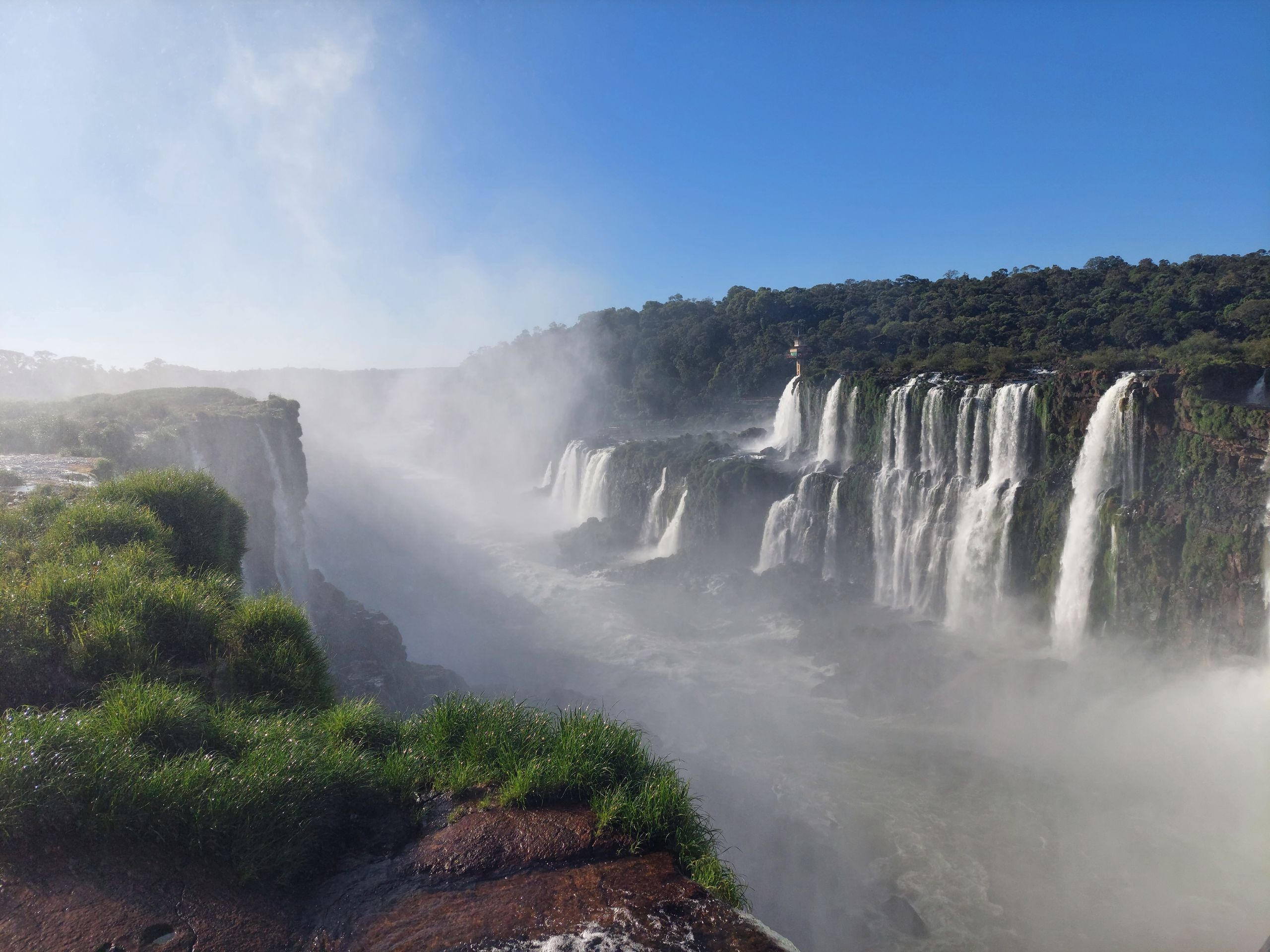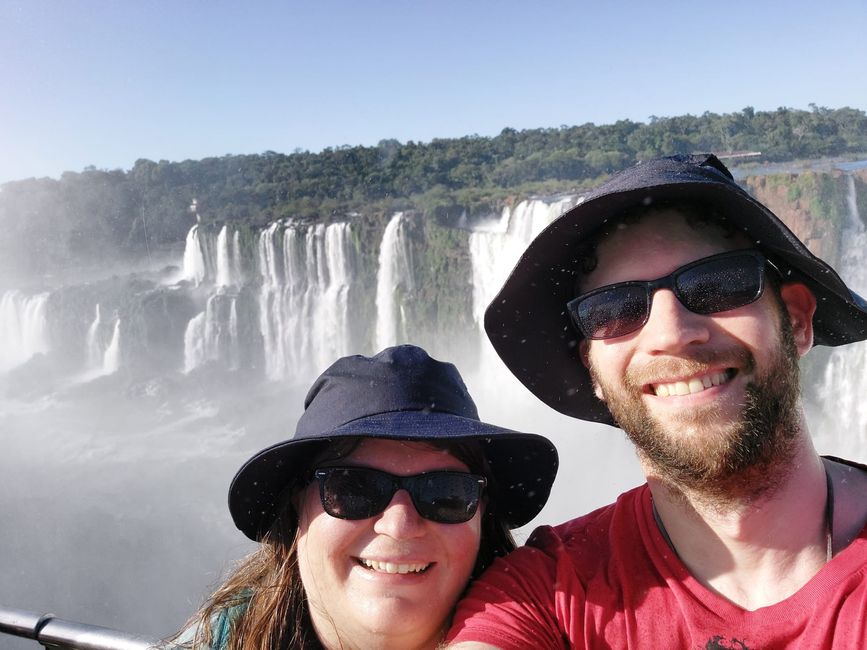Oregon llaqtapi
Publicado: 16.08.2023
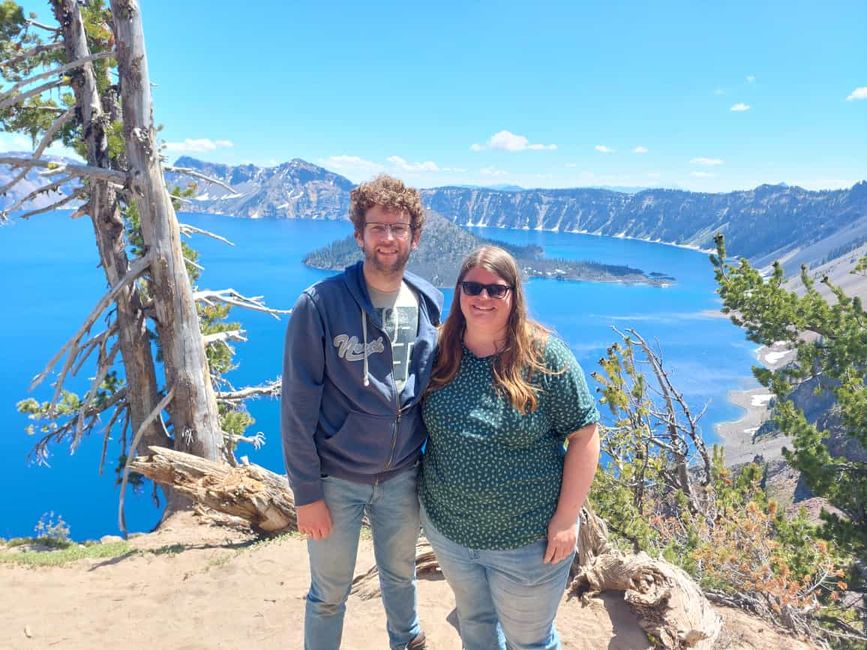
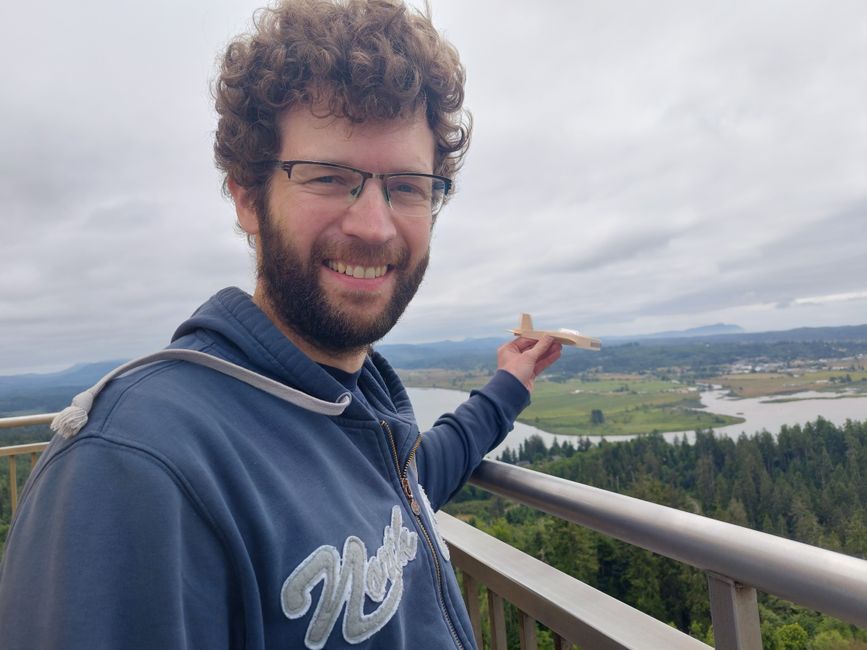
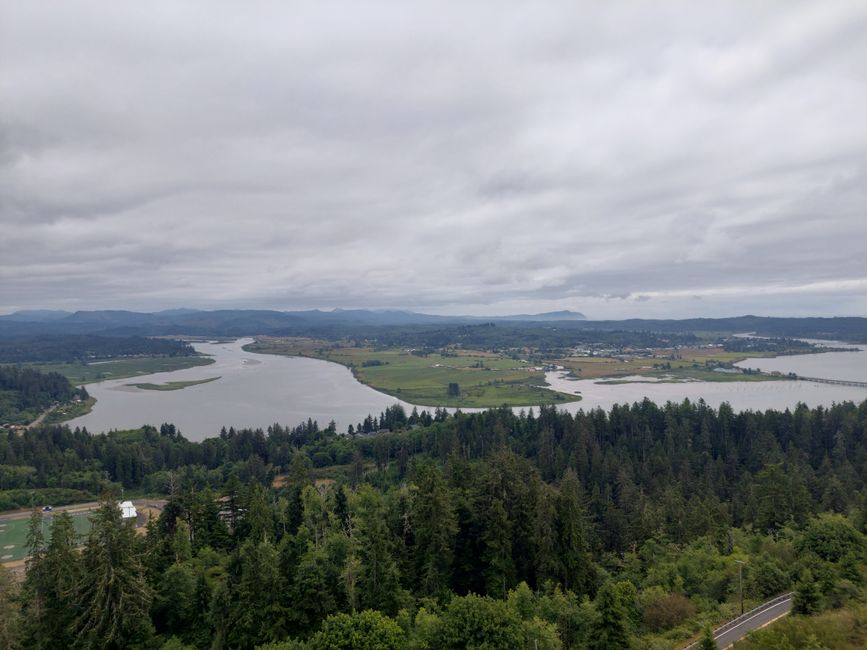
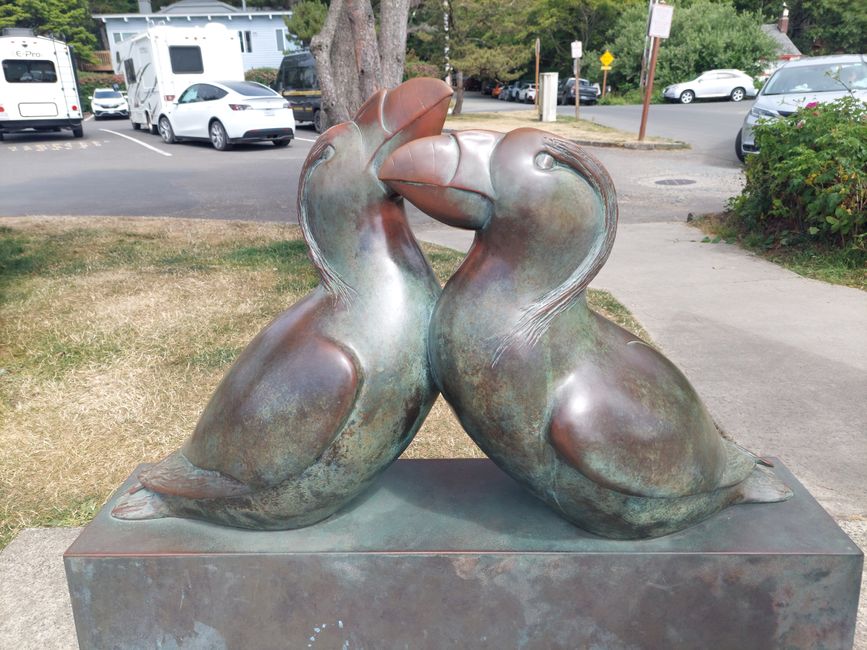
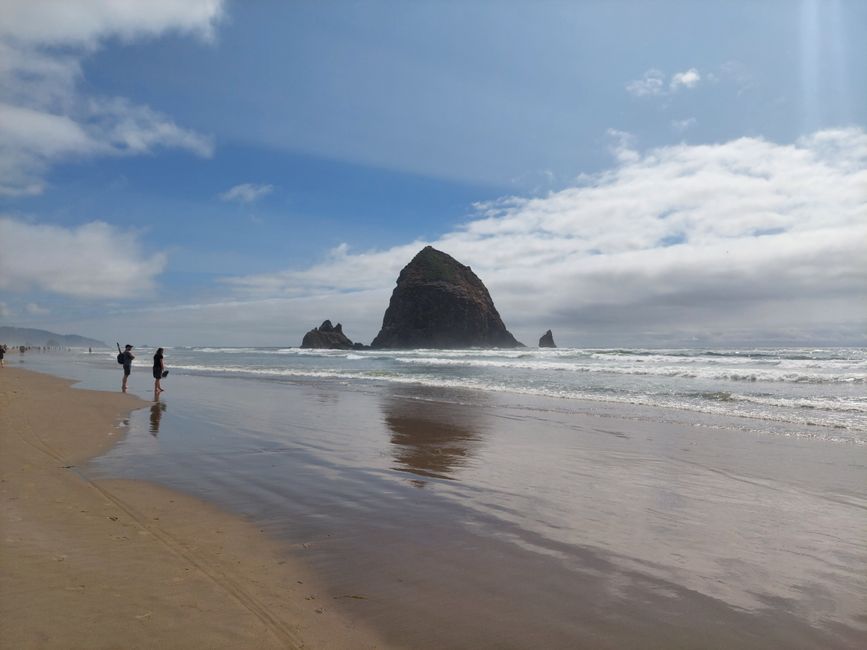
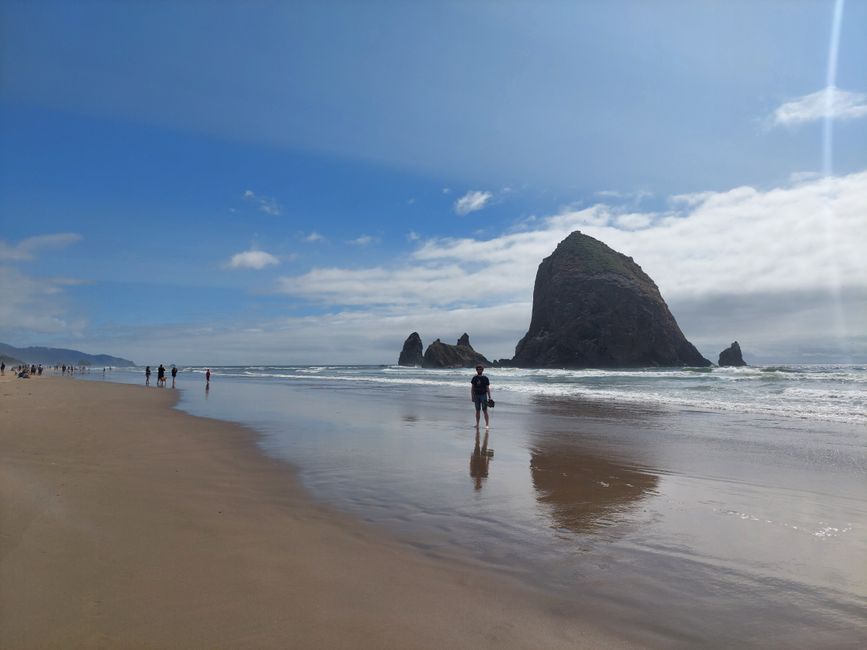
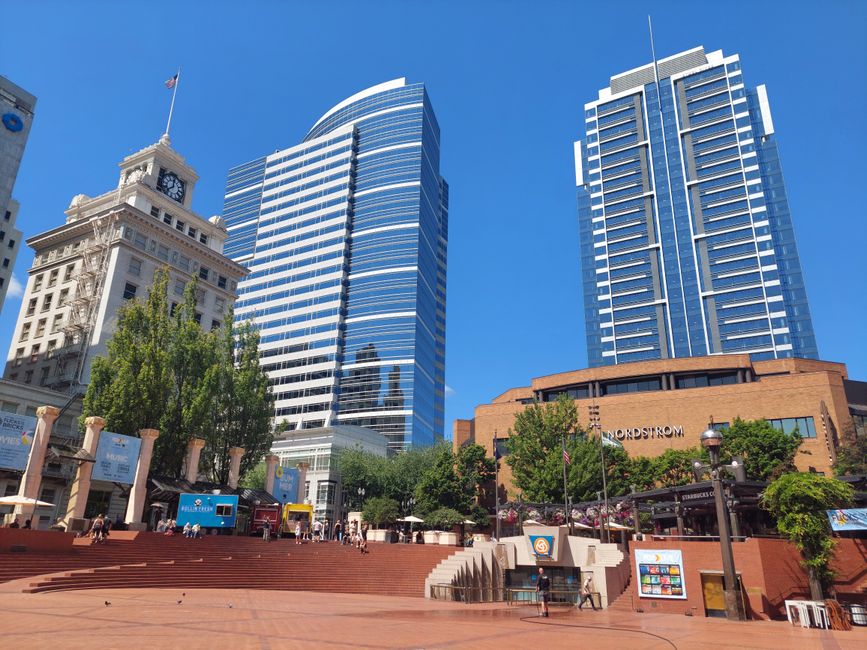
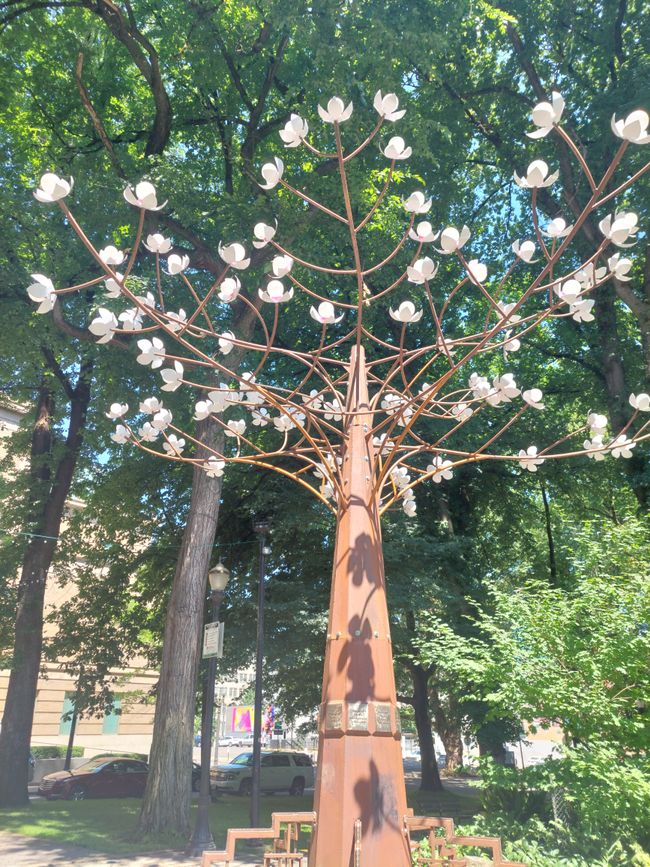
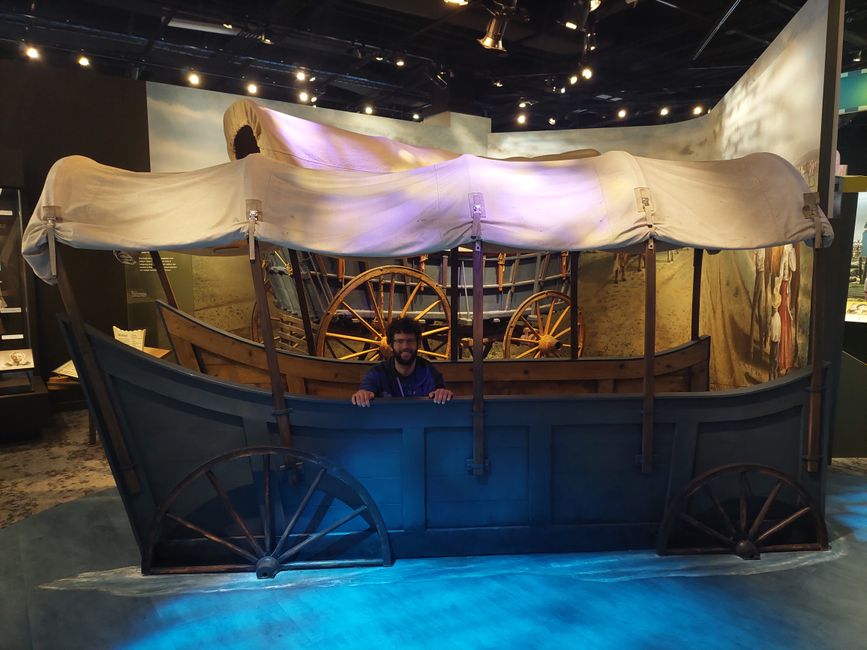
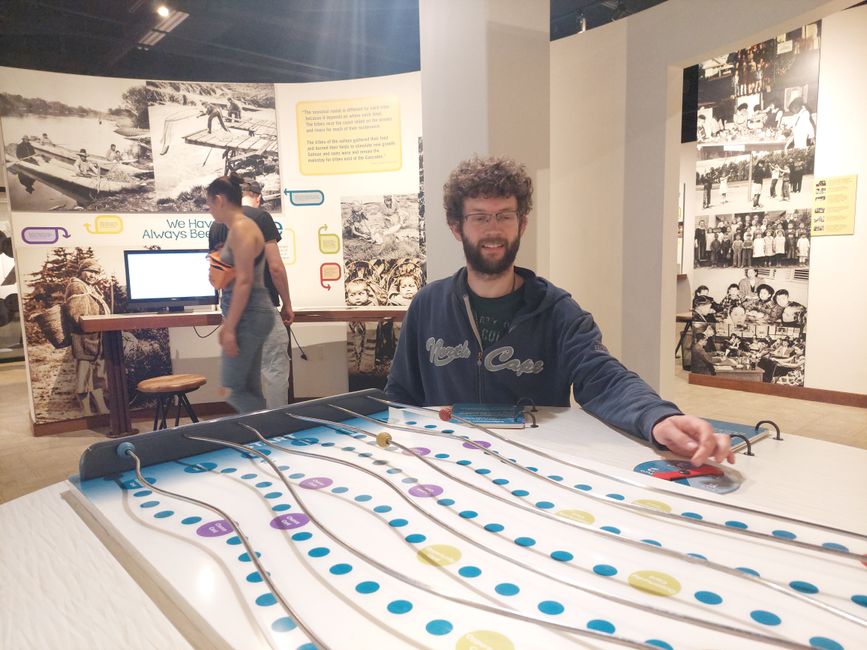
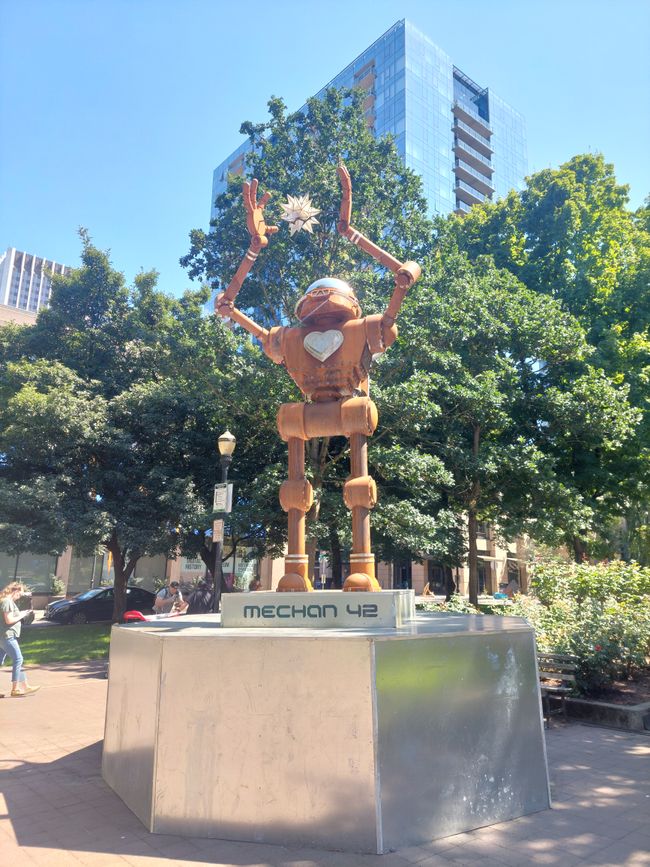
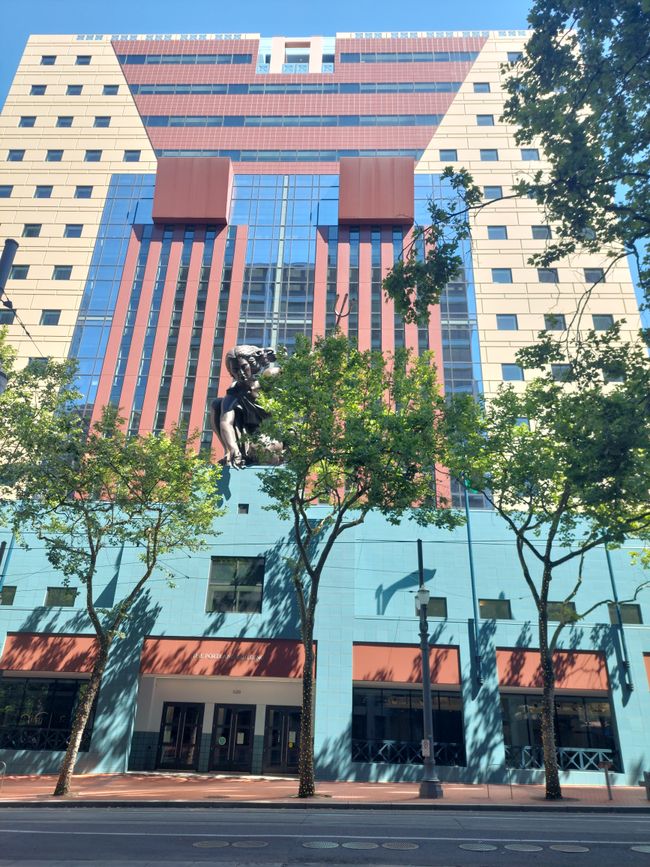
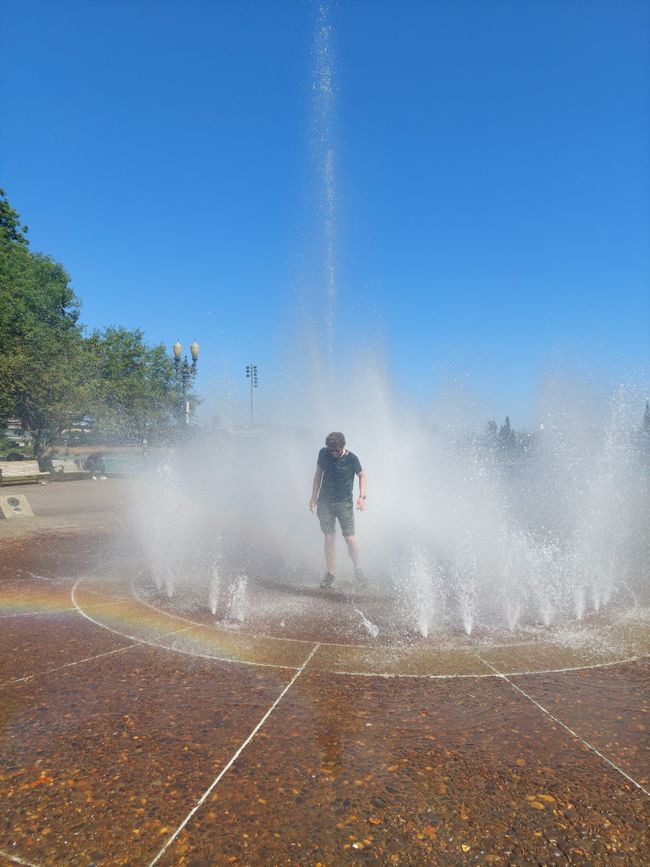
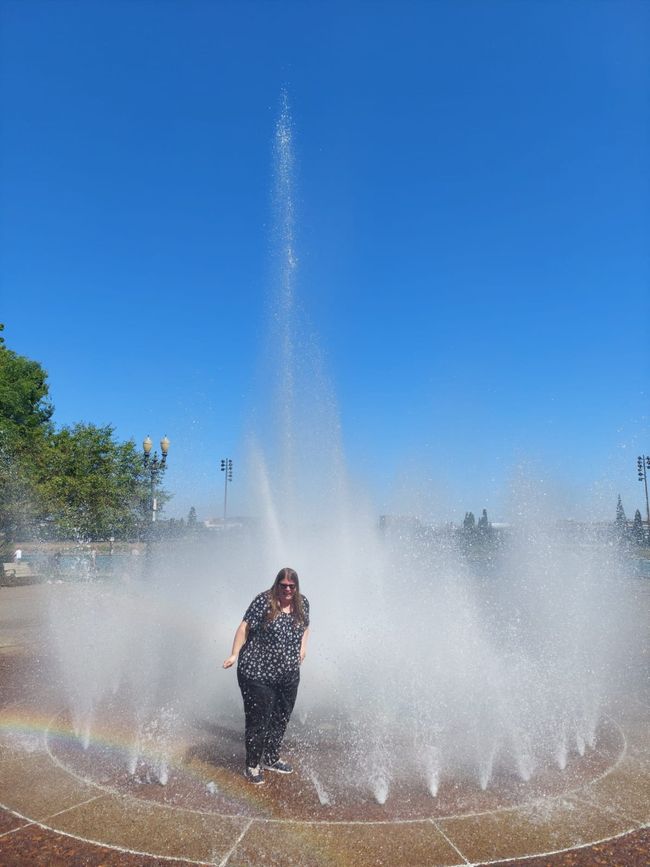
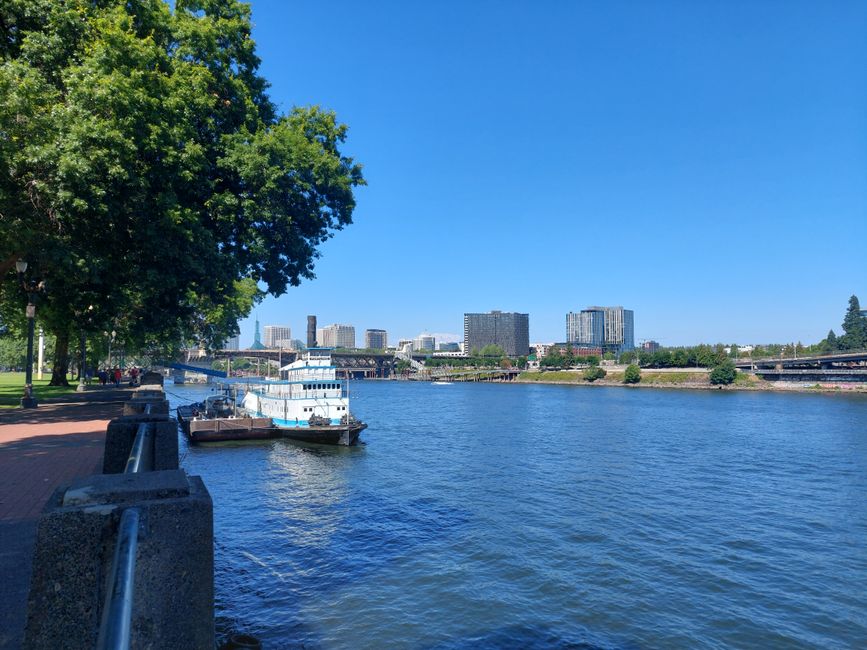
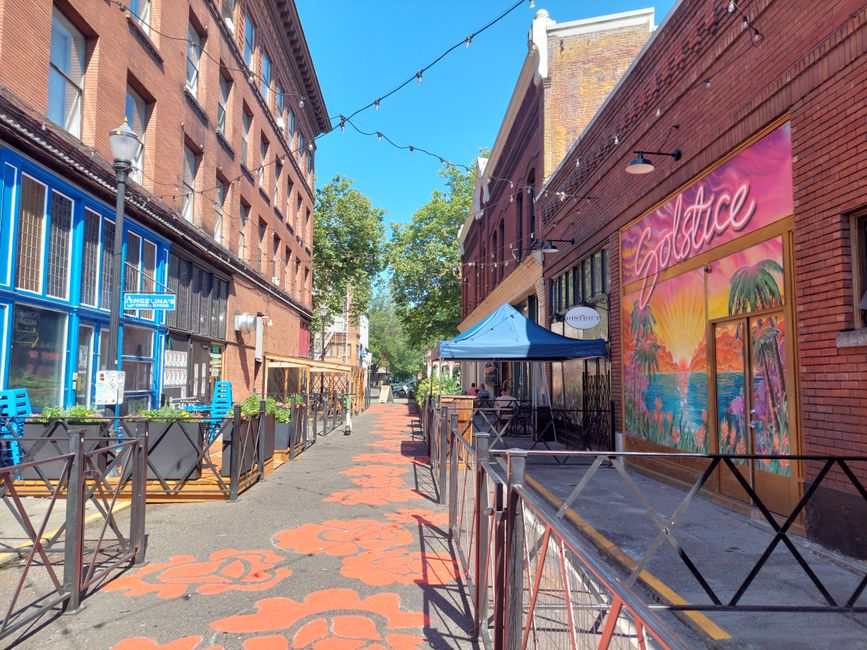
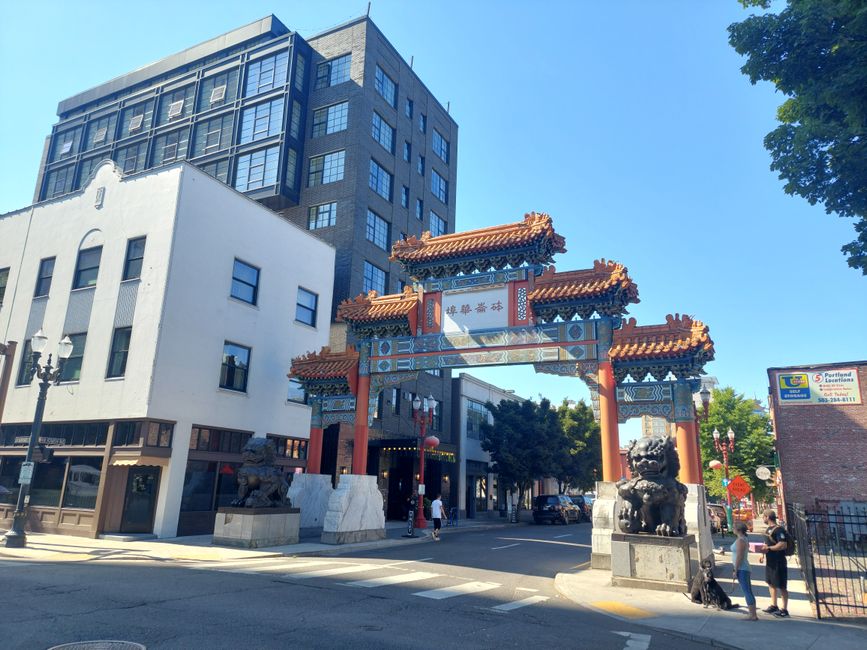
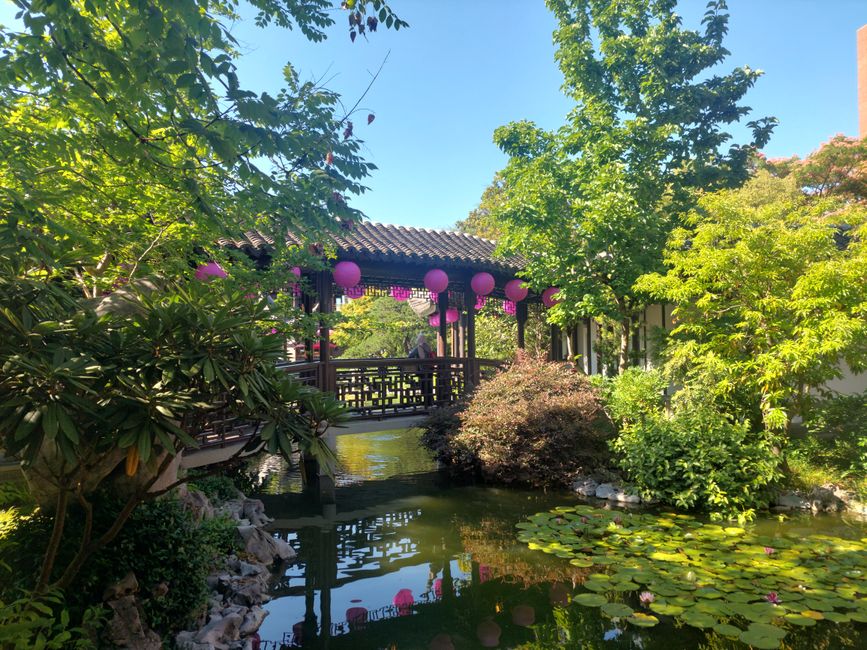
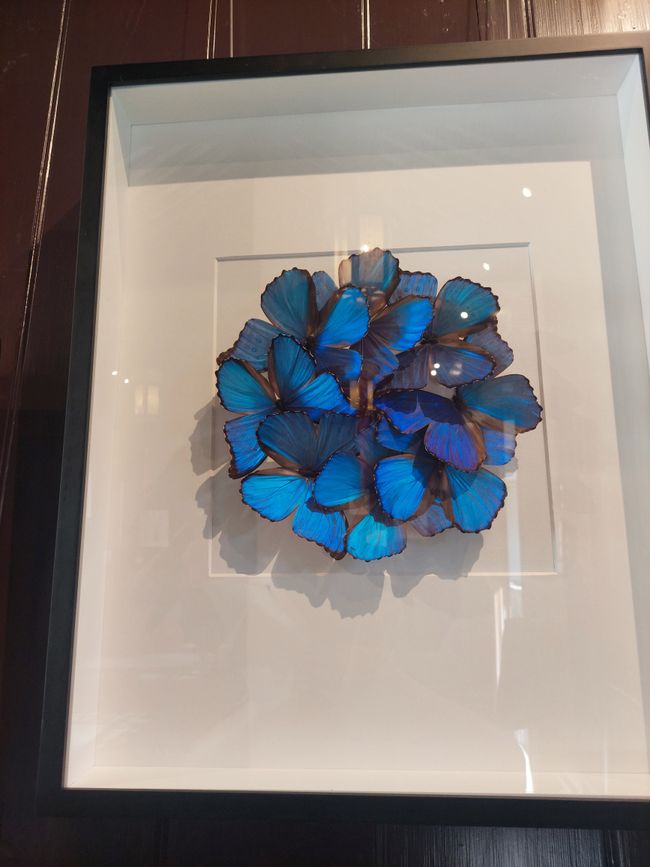
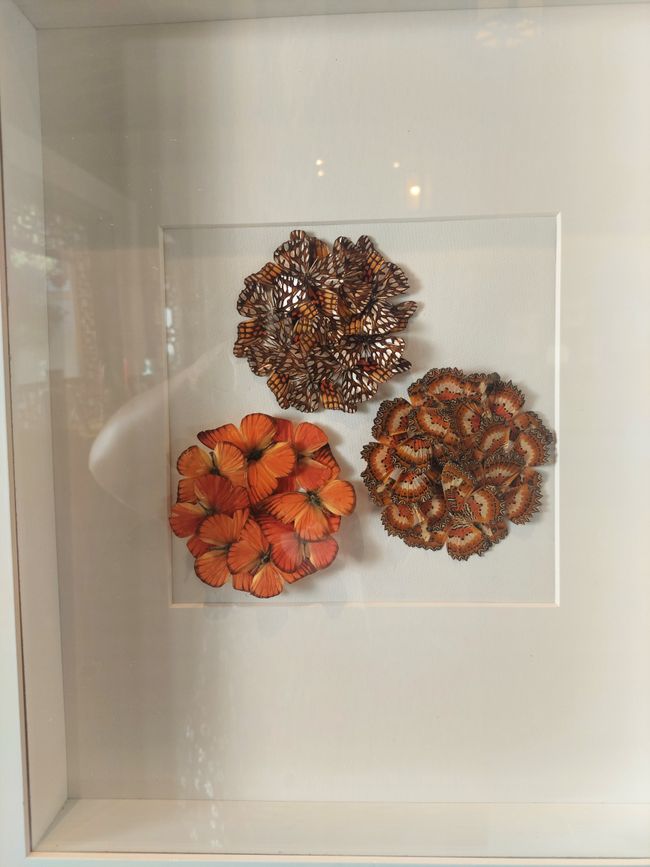
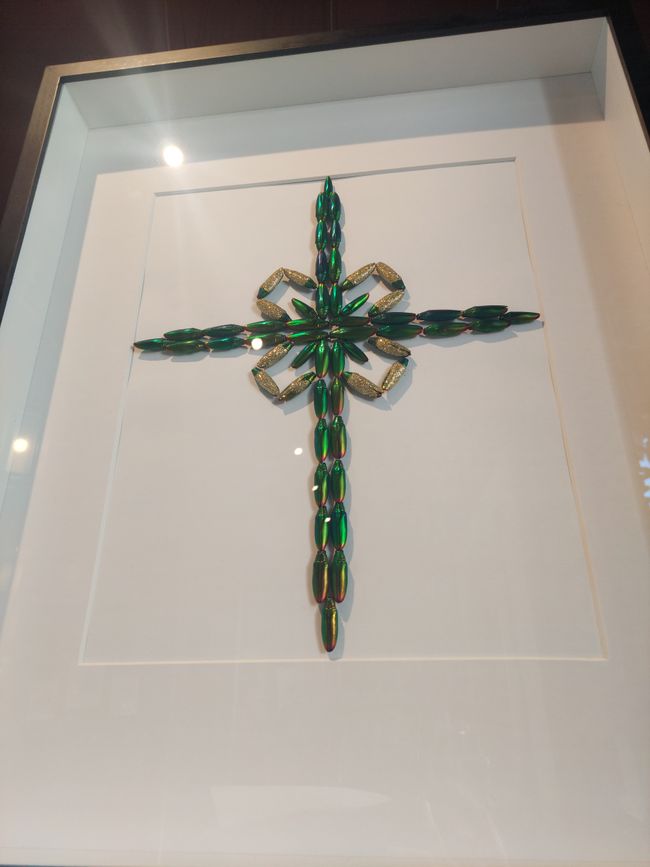
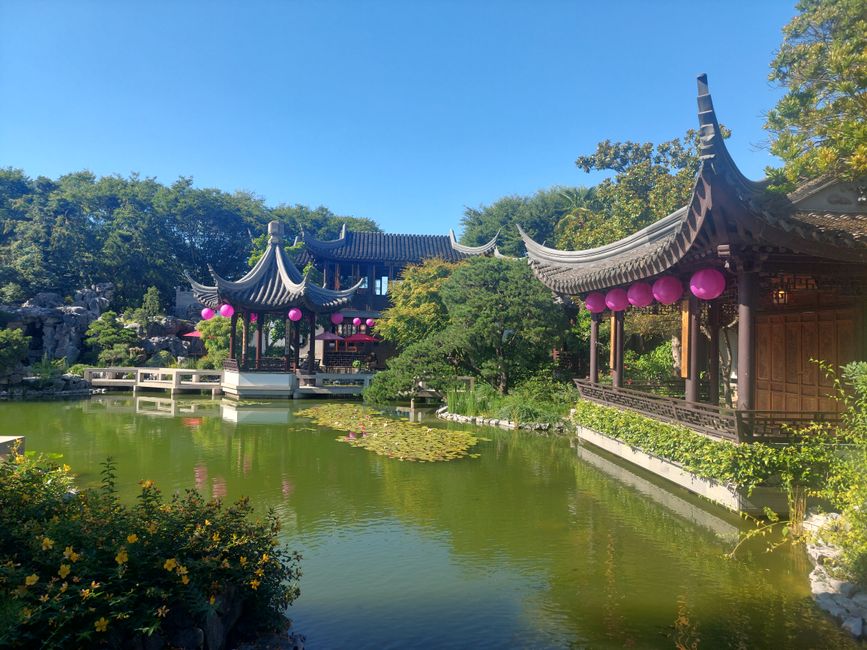
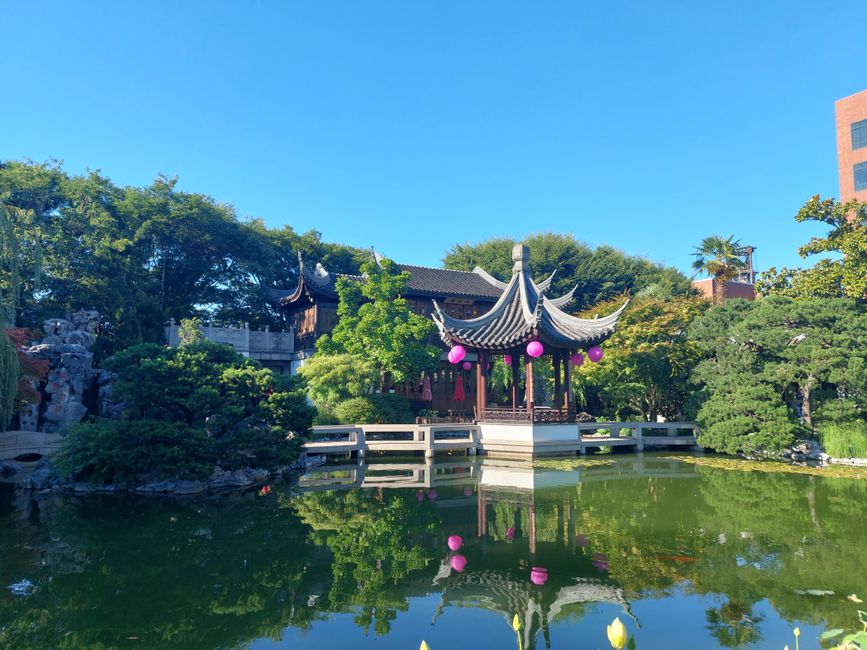
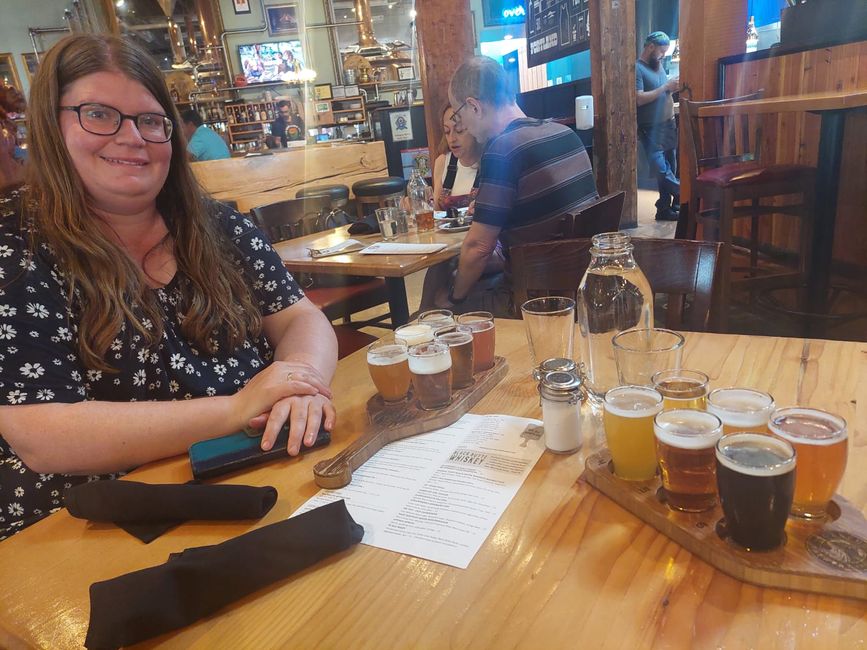
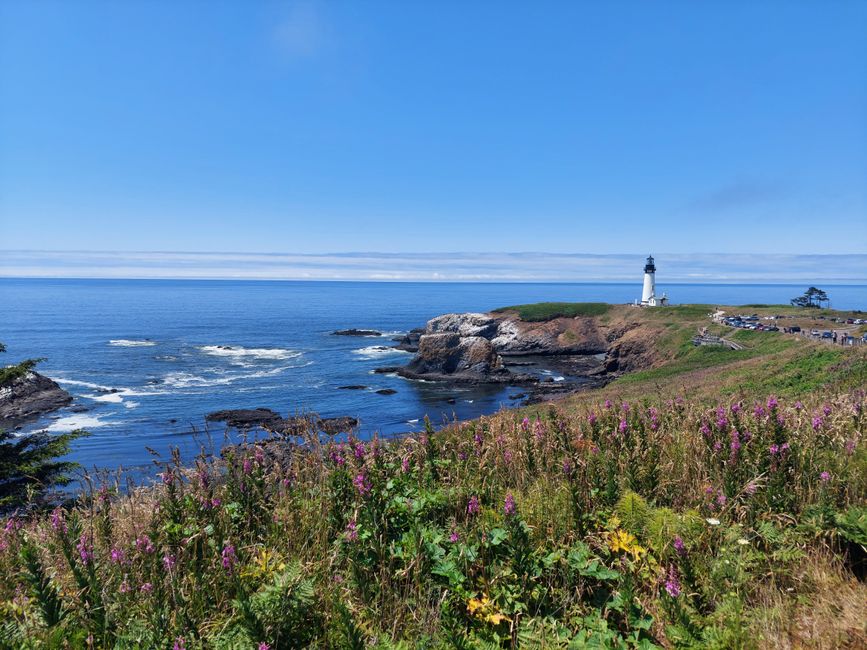
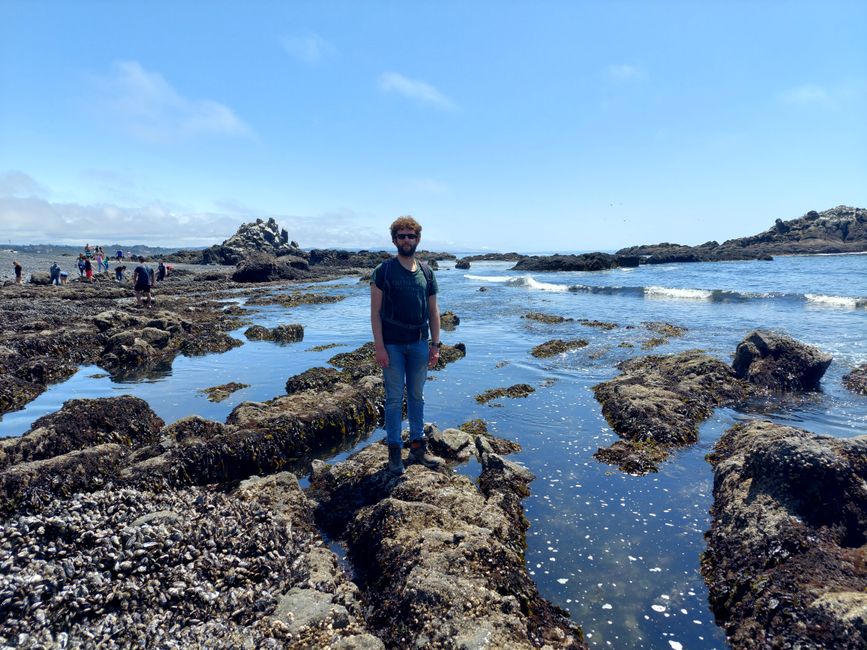
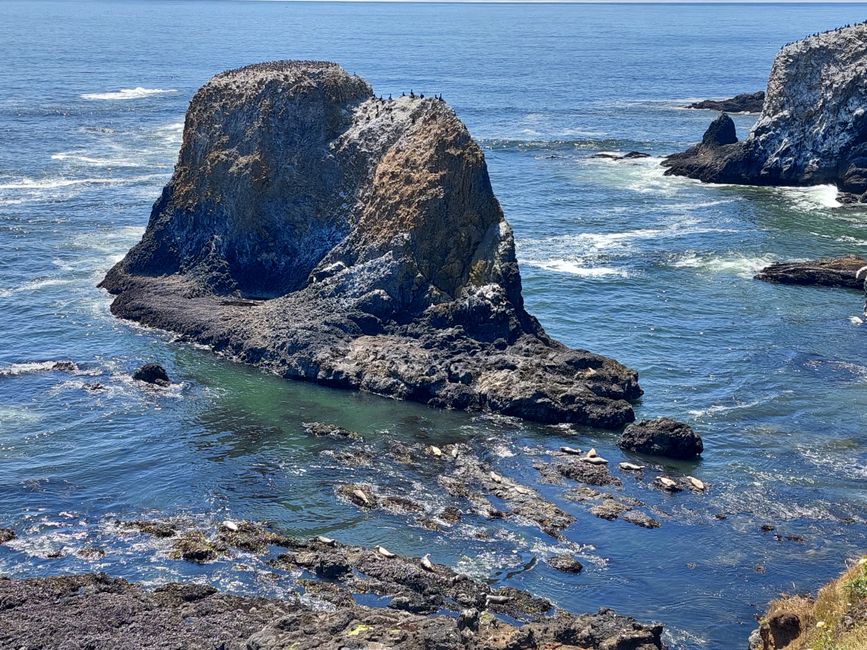
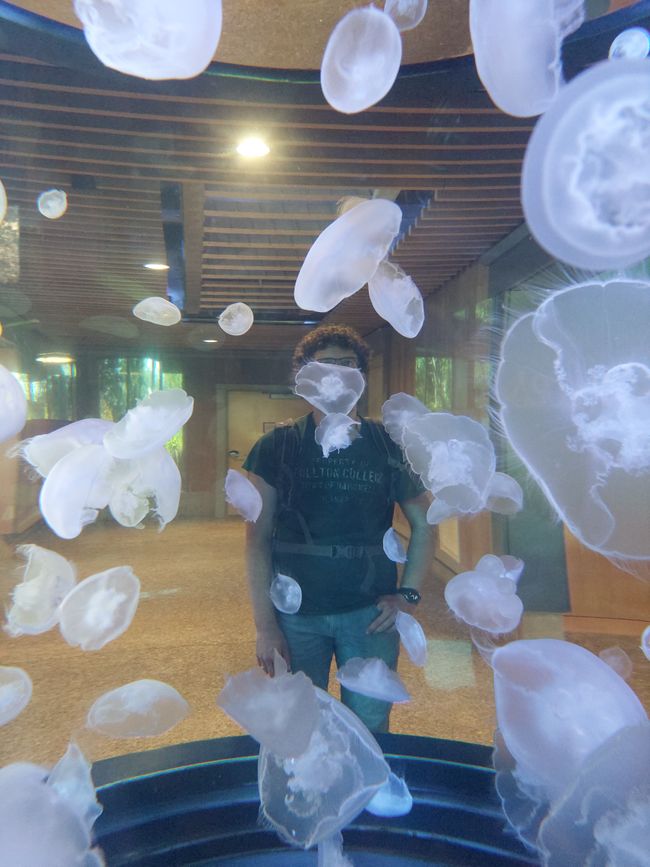
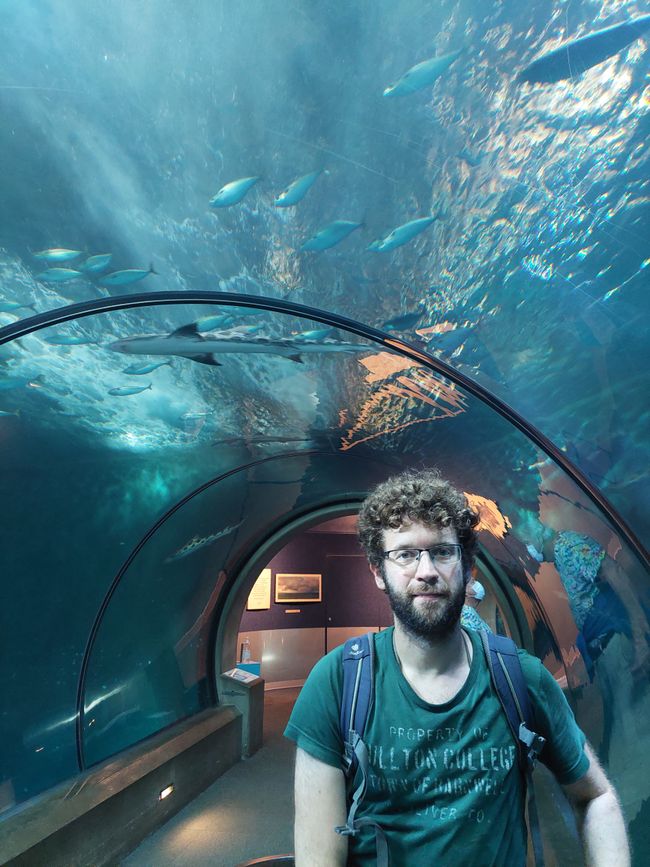
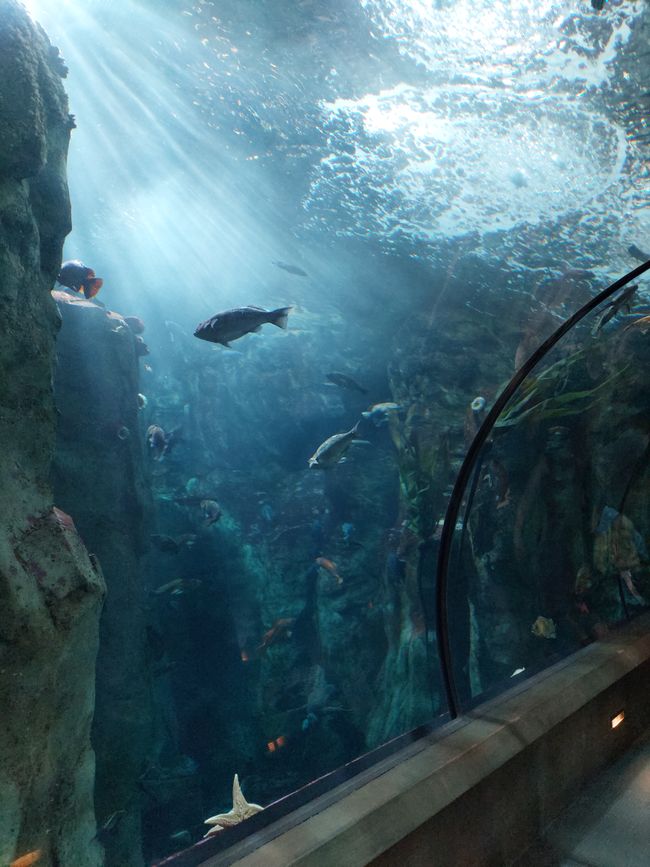
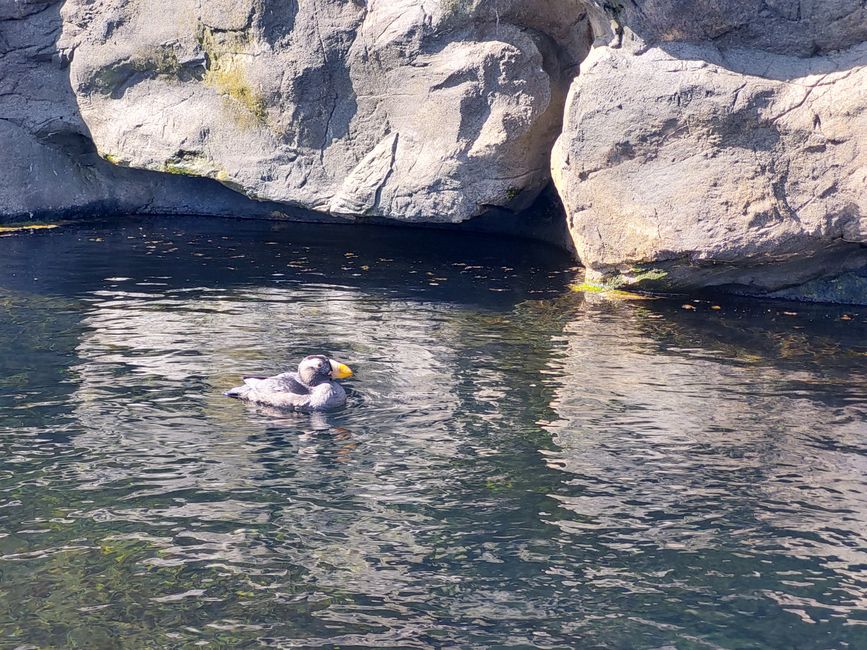
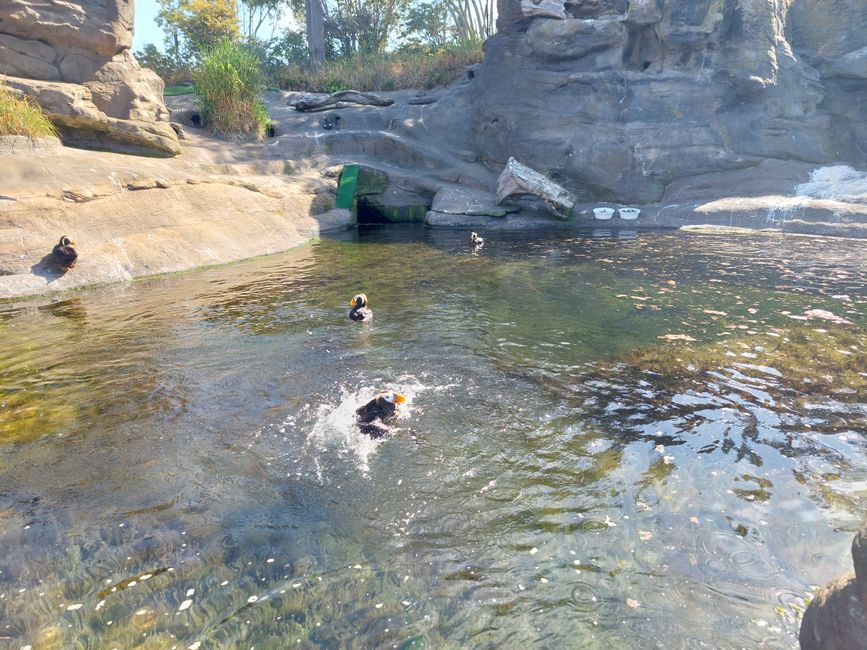
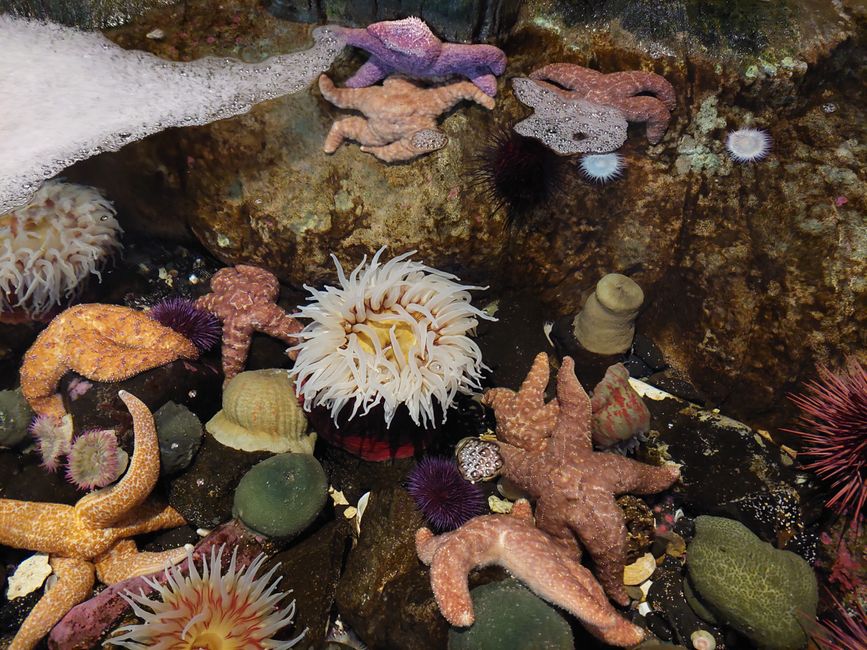
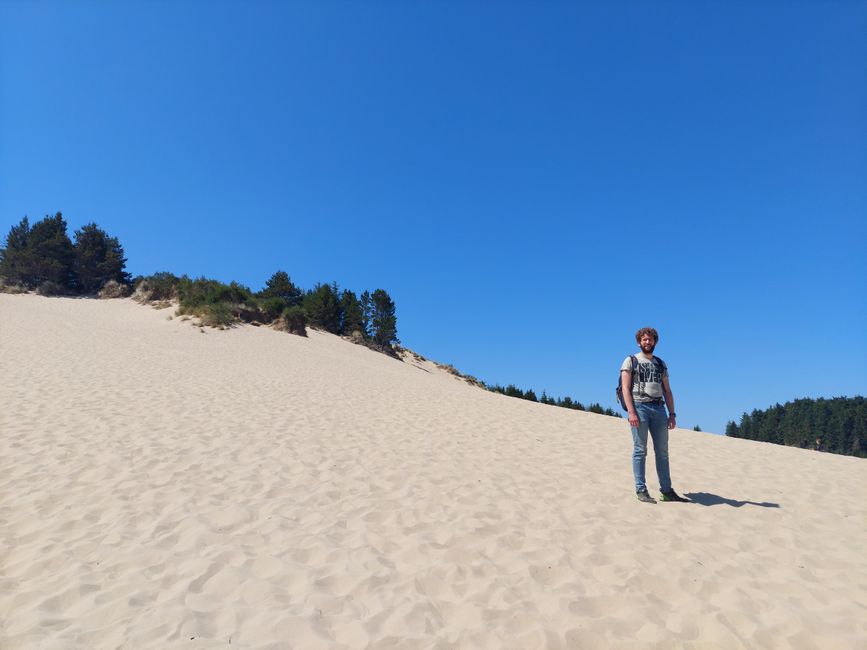
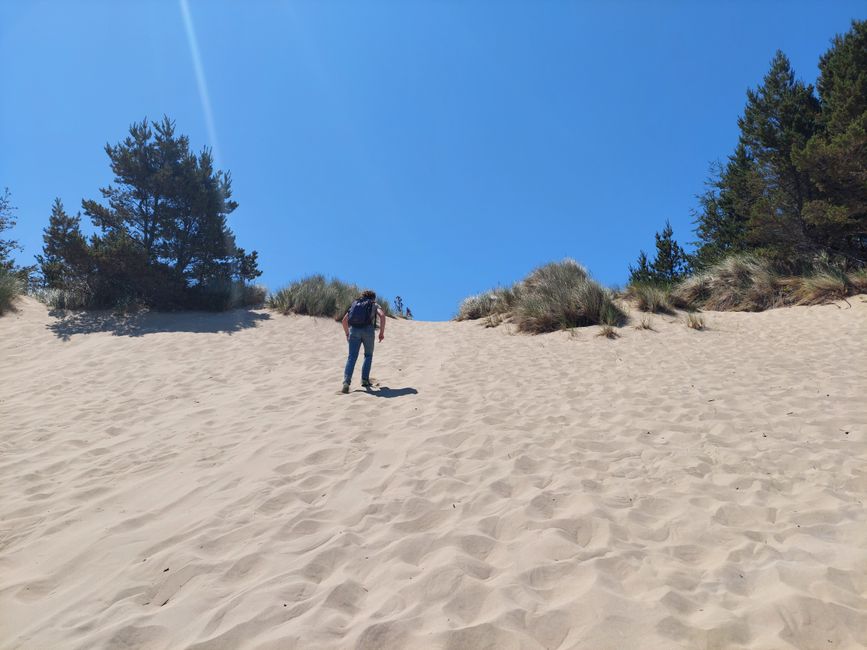
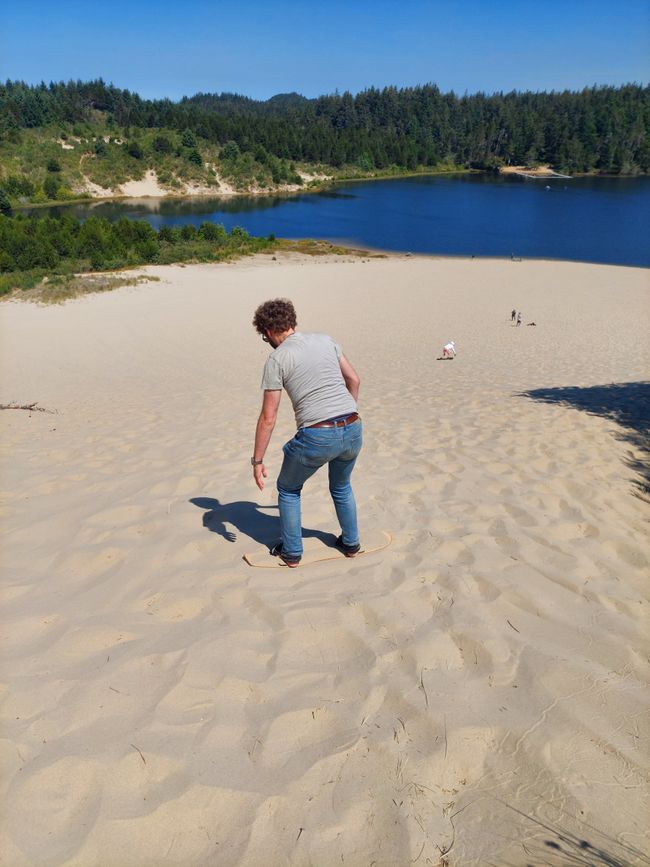
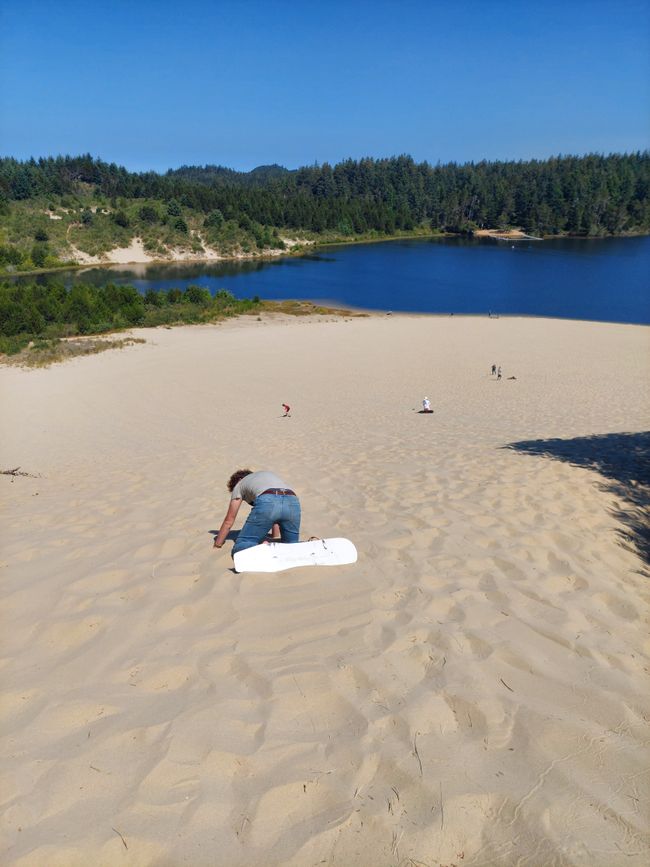
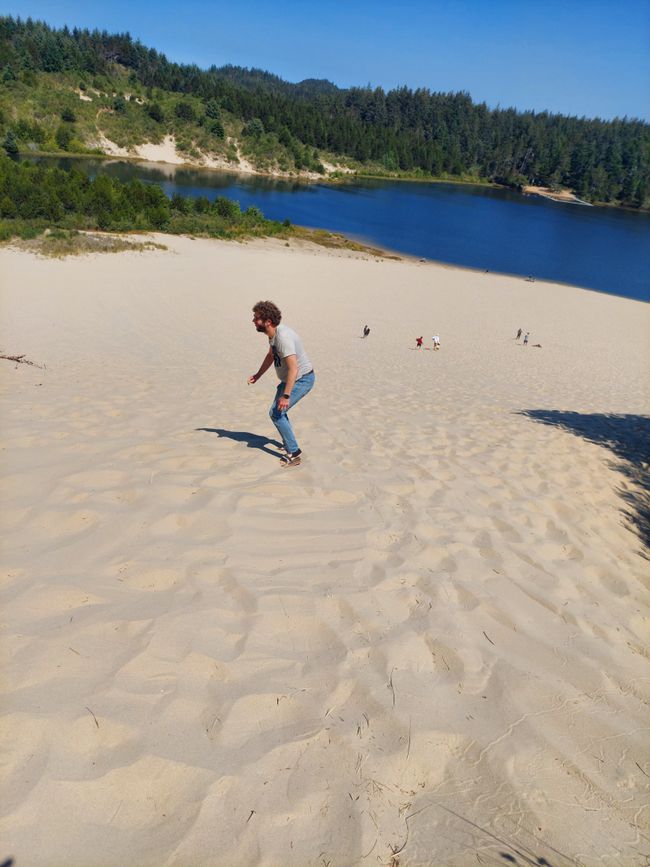
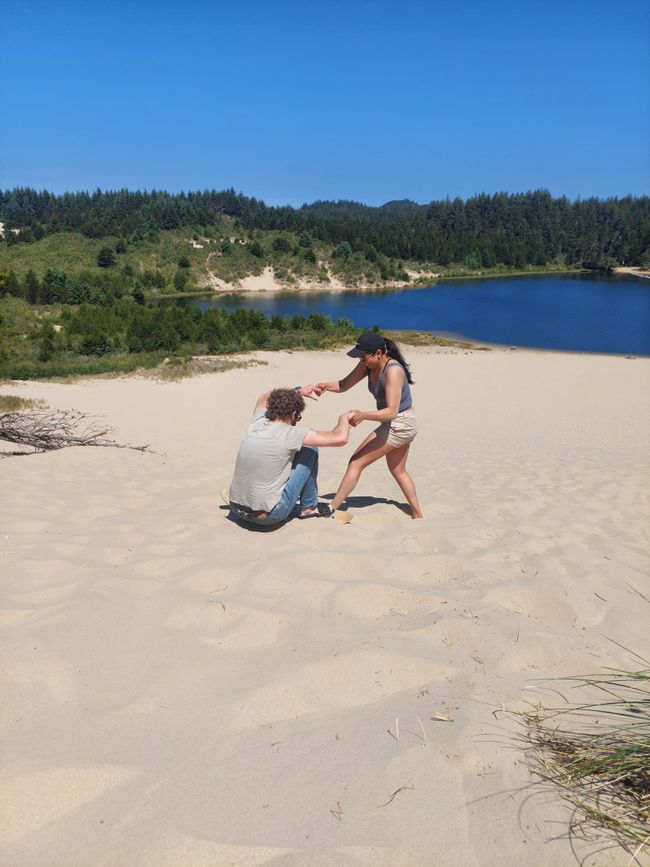
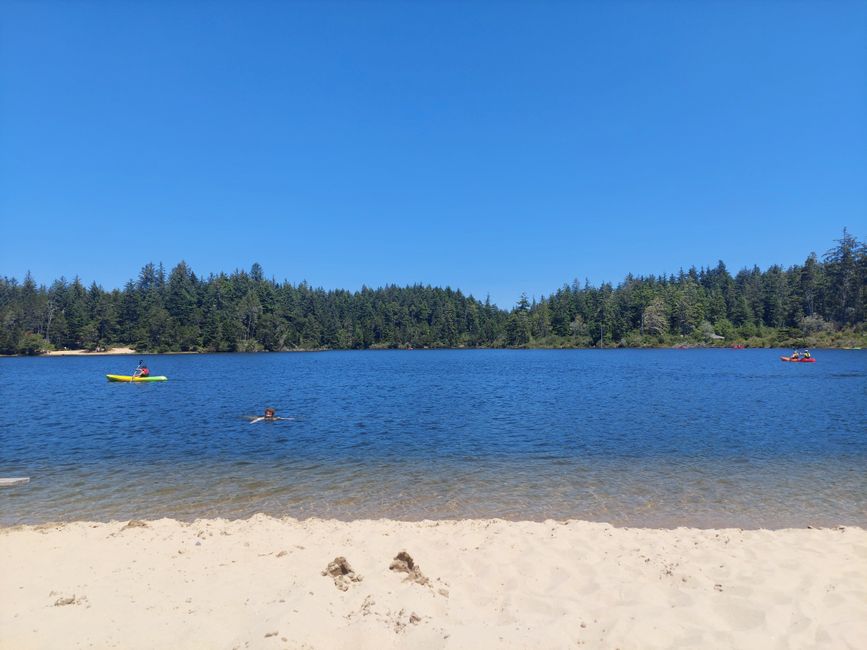
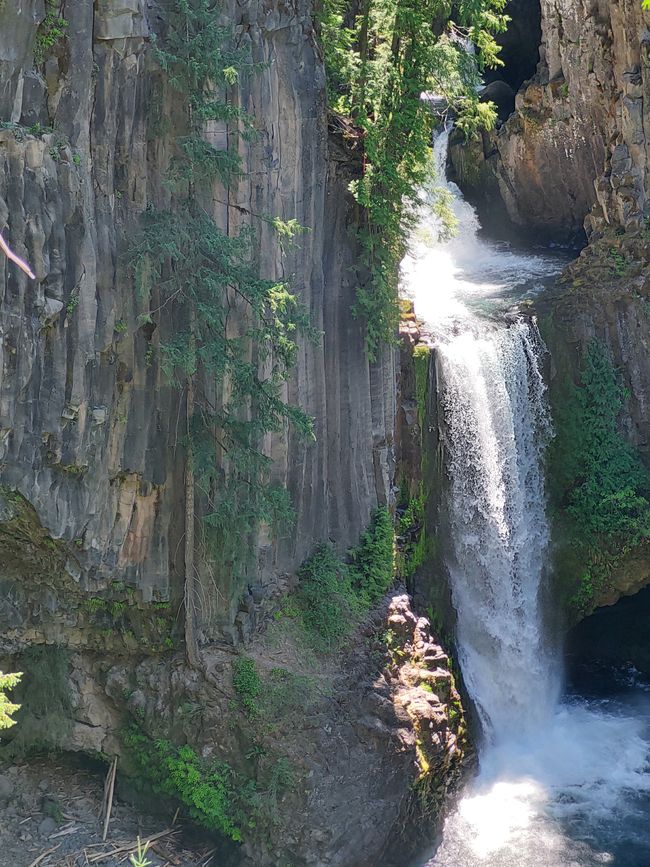
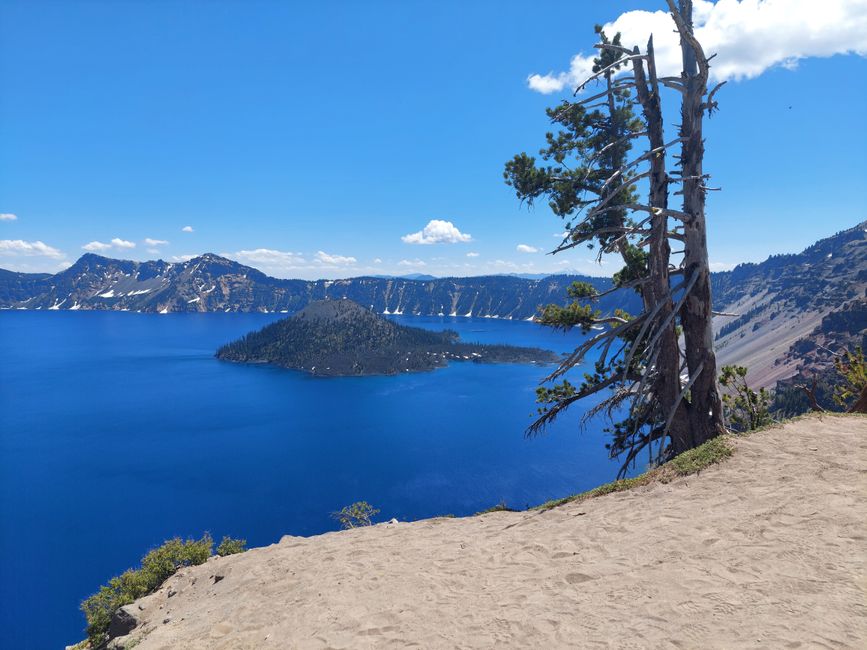
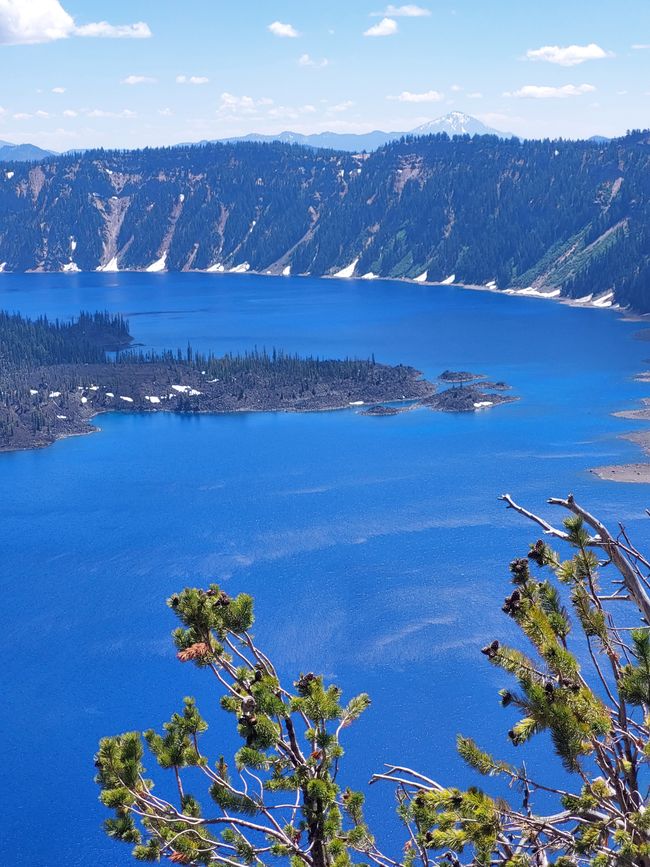
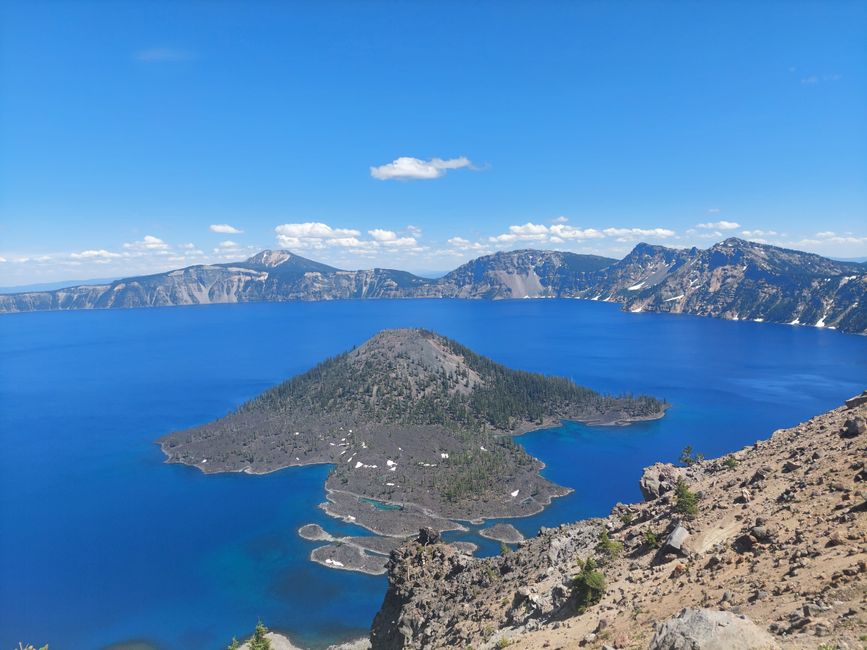
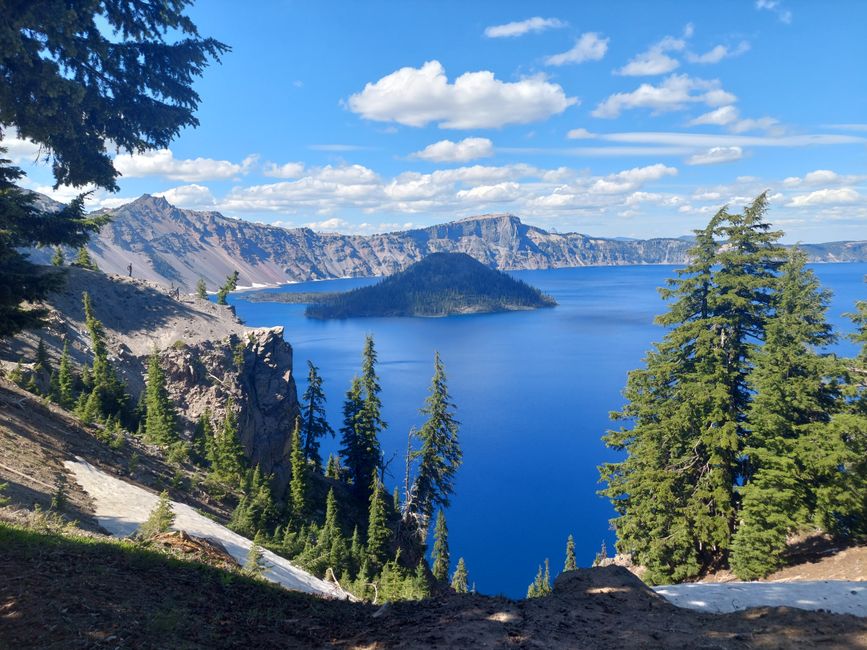
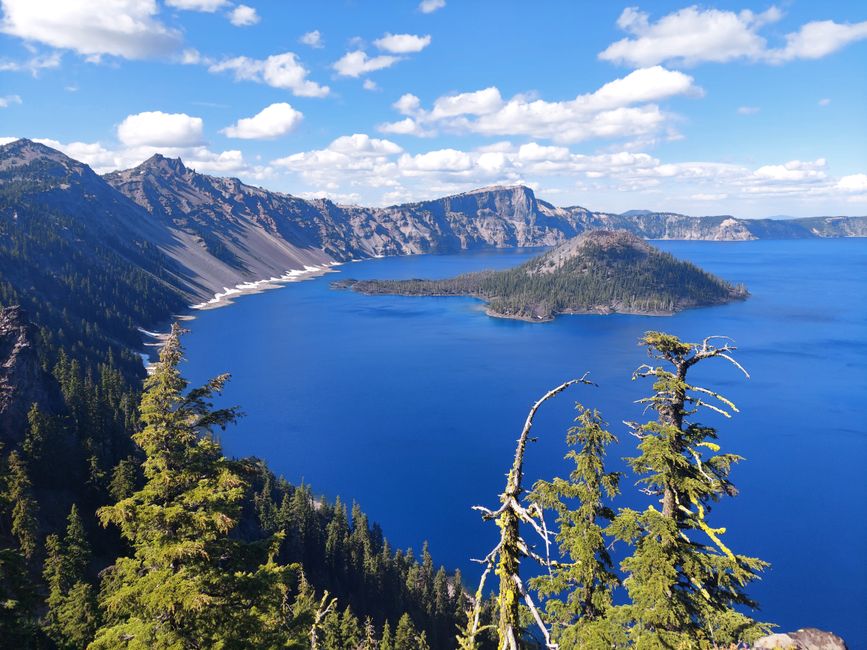
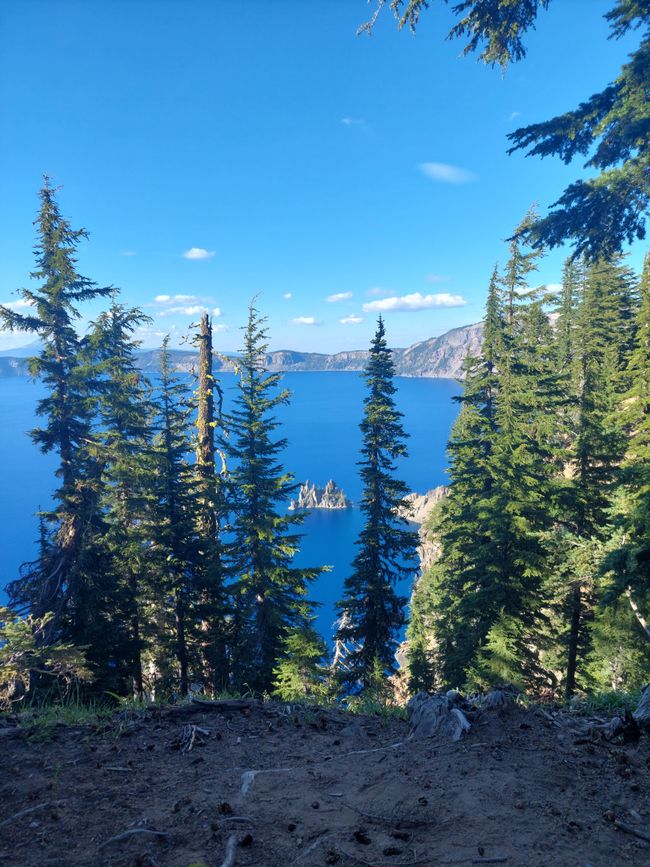
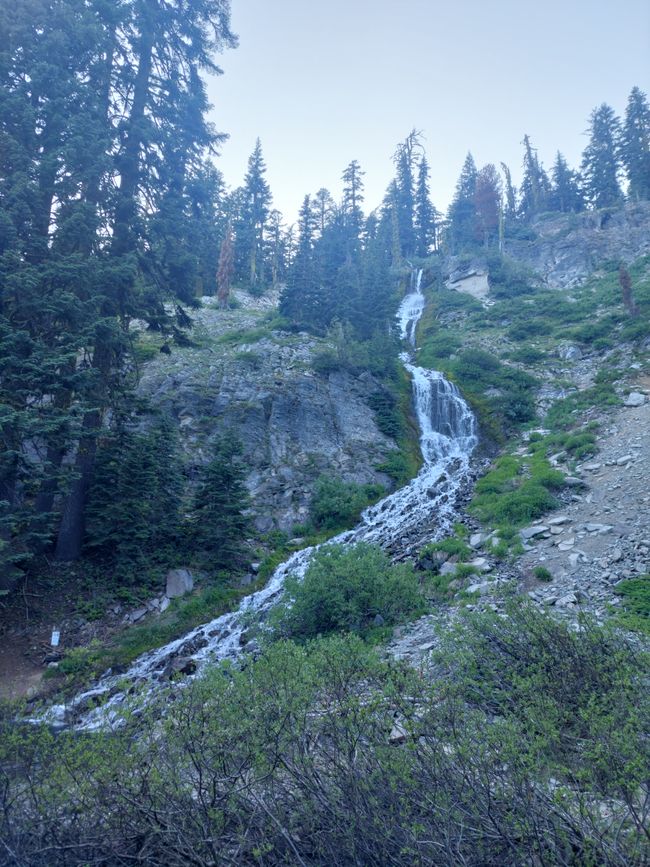
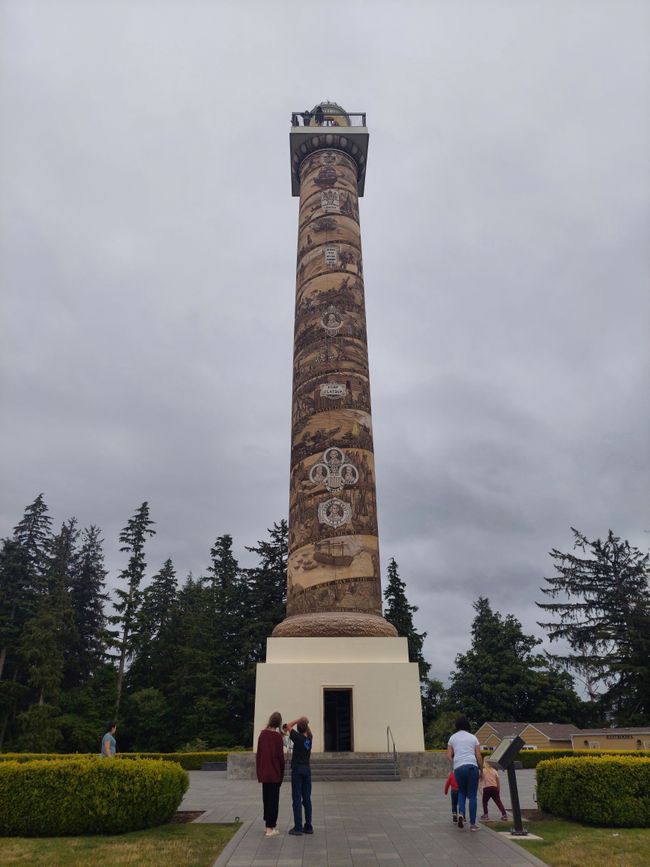
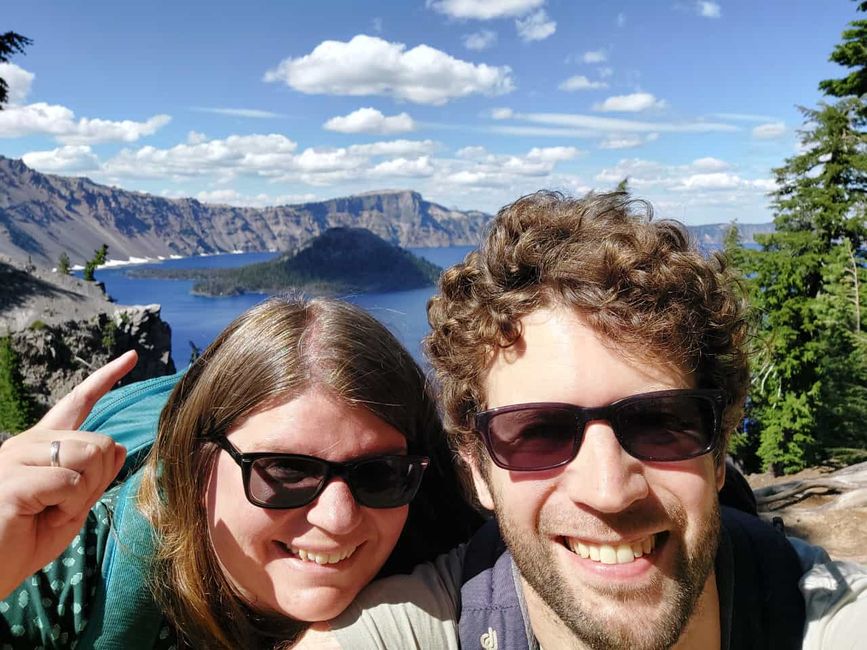
Willakuy qillqaman qillqakuy
We continued driving south on Highway 101 and crossed the Columbia River, which forms the border between the states of Washington and Oregon. Our first stop in Oregon was right after the border in the town of Astoria, where there is a hill with an observation tower (Astoria Column) overlooking the town and the mouth of the Columbia River into the Pacific Ocean. The view was quite nice and the column was also interestingly painted, but while in our country we would have left it at the column on the hill, in the USA you still have to try to upgrade this situation and exploit it through merchandising. So there was a gift shop where you could buy mini wooden airplanes for a dollar, which you could throw off the tower as a special attraction. We treated ourselves to this fun and wanted to see how enjoyable it really is. The most fun part was that we initially forgot to consider the wind when throwing the airplane. After throwing it, the airplane came straight back to us and flew to the other side of the platform, where we could save it at the last moment. On the second attempt, it landed on the exit of the parking lot in front of the tower. The first cars managed to avoid it, but soon we saw and heard a car driving over it. The longer we looked, the more airplanes we saw lying around on the parking lot, the grass, and the trees. We hoped that they would eventually be collected again. We continued driving and made the next stop at Cannon Beach, where we took a walk. There is a huge rock right next to the beach, on which many birds often sit, sometimes even puffins, which we initially thought were parrots (until we were corrected). Unfortunately, we didn't see any puffins though.
After these first impressions, our expectations of Oregon were not excessively high. When we interacted with the people here, we wondered a bit about where we ended up. For example, there are gas stations here where attendants fill up your car - it used to be forbidden to pump gas yourself. When we were at the gas station for the first time, Sebastian was briefly confused when some untrustworthy-looking guy suddenly took his credit card and did roughly the same things at the gas pump that he would have done himself, except that Sebastian would have done it in a more professional manner because by now he knew how the American gas pumps work. When the guy was hammering the buttons, Sebastian was worried that he wouldn't get his card back, but apparently he was really a gas station employee and we were able to get out of the situation with the card returned and a full tank. The, let's call them, Oregon people sometimes seem a bit rough. We could hardly understand them most of the time because they mumbled too much in our perception. Judith googled and actually found an article in Time Magazine about a study that showed that Oregon is the state with the fastest-speaking people. For Sebastian, there is the additional difficulty that sometimes things are said in everyday life that he has not learned in school, has not needed for scientific or technical texts, or has not heard in the limited number of American series he has watched in the original version. So you probably hear from strangers throughout the country who serve someone, the phrase 'You're all set' at the end of the interaction, for example after checking into accommodations. Sebastian felt a little flattered once because he understood 'You're awesome', but Judith brought him back down to earth. But it's also a bit difficult because there is no general German translation for this phrase. Instead, you would hear things like 'Thank you', 'Goodbye', or sometimes at most 'We're done' when you're just standing around foolishly.
Our first major destination in Oregon was the largest city in this state, which is located off the coast despite its name: Portland. This city was considered hip for a long time, as Judith initially read, but for the past ten years, the cityscape has been dominated by junkies and homeless people. Sebastian had never even heard of this city before. We took it easy here and stayed at the hotel for a chill, organization, and laundry day after asking if we could extend our stay for one night. The next day was scheduled for sightseeing in Portland. There used to be a good free walking tour here, but it has not been offered for some time now. But we read that a tour with the GPSMyCity app is recommended, which we already knew from Colmar in Alsace. So we let this app guide us to the most important spots in the city and read as much information as we could until we had to pay. The first spot we went to by bus was Pioneer Courthouse Square, which, like the squares in Seattle, was embedded in the block structure typical of American cities but was nicely designed. As we continued walking, we went through elongated park areas, of which there are many in Portland. Next, the tour took us to the Oregon Historic Society Museum, which mainly dealt with the different original and immigrant population groups and was really well done. We especially liked the many interactive elements there. In many games, which didn't always end well, you could experience the fate of immigrants or guest workers. After the museum, we continued walking towards the Willamette River and saw a beautiful fountain right on the square, which you could walk through. Sebastian has always liked fountains, but he had never had the opportunity to walk through one. Now was the time. Judith also joined in. You might think that maybe it wasn't the best idea, but it was our biggest adventure in Portland, and because the sun was shining all day, we also got dry again everywhere. Our route led us along the river past parking areas towards the store 'Voodoo Doughnuts', whose donuts in many exotic flavors you should try when in Portland. We each got one and went to the next stop with the box, the Chinese Garden. There we had to eat them before entering, but we weren't quite as thrilled with them. The Chinese Garden was pretty, but it cost a lot to enter. Artworks made from real insects were currently being exhibited there, which looked nice at first glance, but wasn't really our thing. After that, we had seen all the points of this city tour and went even further to a brewery because there is a lot of craft beer in Portland. We each ordered a beer flight and good food and then bought mango IPAs. On the way to the bus stop, we stopped at a huge bookstore, for which Portland is also known. But because it was shortly before closing time, we only had time to buy socks for Judith there. We then took the bus back to the hotel together with a few junkies. When we wanted to continue our journey the next day, Sebastian went back to use the bathroom and found out that, as we had just noticed, we were not charged for one night because something apparently went wrong with the extension - but we could be happy because we didn't have to pay for it now either.
In Portland, by the way, we were for the first time in an accommodation from which you couldn't reach a single restaurant on foot, not because of the distances, but because there simply were no sidewalks. The walk to the first restaurant we had chosen could have been quite nice on foot. On the second day, we wanted to go out to eat again, but we ended up once again in a restaurant where you couldn't eat on site (although this time even Google Maps gave us a different impression). Here it was convenient that we had the car with us because we could take the food with us and eat it immediately in the hotel room. Because the portion was way too much, we put the leftovers in the refrigerator, but we forgot about them in between and ultimately had to throw them away. In the future, we need to better plan that the portions here are often huge. In this case, there were even instructions on the package on how to reheat the leftovers in an air fryer (which we obviously didn't have). Even when eating at the restaurant, it is customary in the US to ask for a to-go box at the end to take the leftovers with you.
After Portland, we drove back to the coast and saw some animals there initially: seals and even some underwater creatures in the tide pools. Tide pools are depressions on the beach that fill with water and creatures like shells and sea anemones during high tide and remain filled when the water recedes. You might think that there is a similarly cool and catchy name for them in German, but no, we call them 'Gezeitentümpel'. In Newport, we also visited an aquarium. There are aquariums along the coast every so often, but the one in Newport was recommended and is apparently one of the better ones. It was relatively expensive but nicely done with indoor and outdoor areas and a 'petting zoo', where you could gently touch creatures from the tide pools. We also saw various species of puffins here. Unfortunately, there were no sea otters in the sea otter pools, and at the Sea Lion Caves, where we went afterwards, there were also no sea lions in sight. But we would still have plenty of opportunities to observe various animals along the coast in the future.
Further south along the coast, there were many dunes. We first went to Jessie M. Honeyman Memorial State Park, where a dune ends in a lake. We hiked up the dune and met a nice couple from Seattle who had just rented sandboards and asked if we wanted to try them too. Sebastian gratefully accepted this offer because he had almost regretted not renting one himself because it wouldn't have been worth paying the daily rate. So it was a great opportunity to try sandboarding while Judith chatted with the people from Seattle. They probably didn't expect him to demonstrate such great perseverance when trying to learn new sports. At some point, he decided to walk back up the dune to return the sandboard, and they remained very friendly. Of course, if they had given a clear hint, he would have done it earlier, but it is likely that people here are often too polite to express clear wishes. The time was enough for at least the first lesson Sebastian knows about rolling and sliding sports: Falling down and getting up. Afterwards, we cooled off in the lake. On this day, Sebastian tried something else, namely a dune buggy tour. He also enjoyed this. Because he chose the adrenaline version, the driver drove towards steep slopes several times and turned at the last moment. There were also several photo stops, including one with a view of the state park we had just visited, where the driver mentioned that sandboarding was boring and annoying because you always have to walk back up the dune if you don't have a dune buggy like him. Because Judith was undecided beforehand about whether she wanted to ride along and then there was suddenly no more space available, she read on the Kindle during that time, which we bought specifically for our trip(s). We don't get to it often enough, so it's nice to have the opportunity.
For our last day in Oregon, when we had the best hotel breakfast with freshly made omelets and real dishes, we had planned another visit to a national park, namely Crater Lake, Oregon's only national park. We drove partly right next to cliffs without guardrails around Crater Lake, a volcano crater filled with water, and saw waterfalls, shy deer, and of course Crater Lake from various perspectives at each stop. We also wanted to try out what it means when a hiking trail is classified as 'moderate', which is the middle of three levels here. In Europe, especially in Scandinavia, we have often wondered if the indicated difficulties of hiking trails are not somewhat understated. On the other hand, in the two national parks in Washington, we walked many hiking trails classified as 'easy', which were sometimes even paved and were more than easy according to our accustomed standards - something like that is not so common with us. In the USA, most people probably don't hike much through the national parks anyway, but rather drive to the main viewpoints by car. So we hiked along the moderate hiking trail at Crater Lake, and it actually seemed more easy, so we already thought that the proximity to the abyss had an influence on this classification. Shortly before the end, at another parking lot, we suddenly had to climb a lot, which Sebastian tried alone and then came back because we had to walk all the way back. Fortunately, we didn't want to walk this hiking trail in the other direction.
So those were our adventures in Oregon, where we really enjoyed it despite the first less promising impressions. We were curious about what awaited us in California.
Willakuy qillqaman qillqakuy
Kutichiy
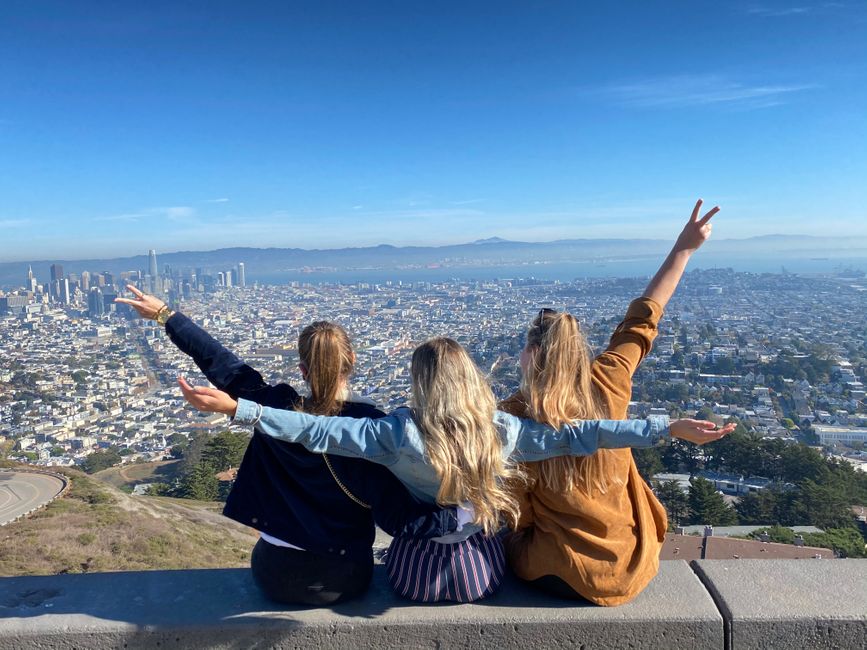
Viaje willakuy USA
